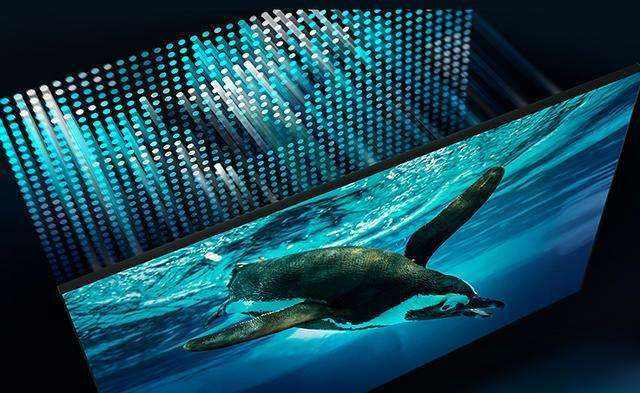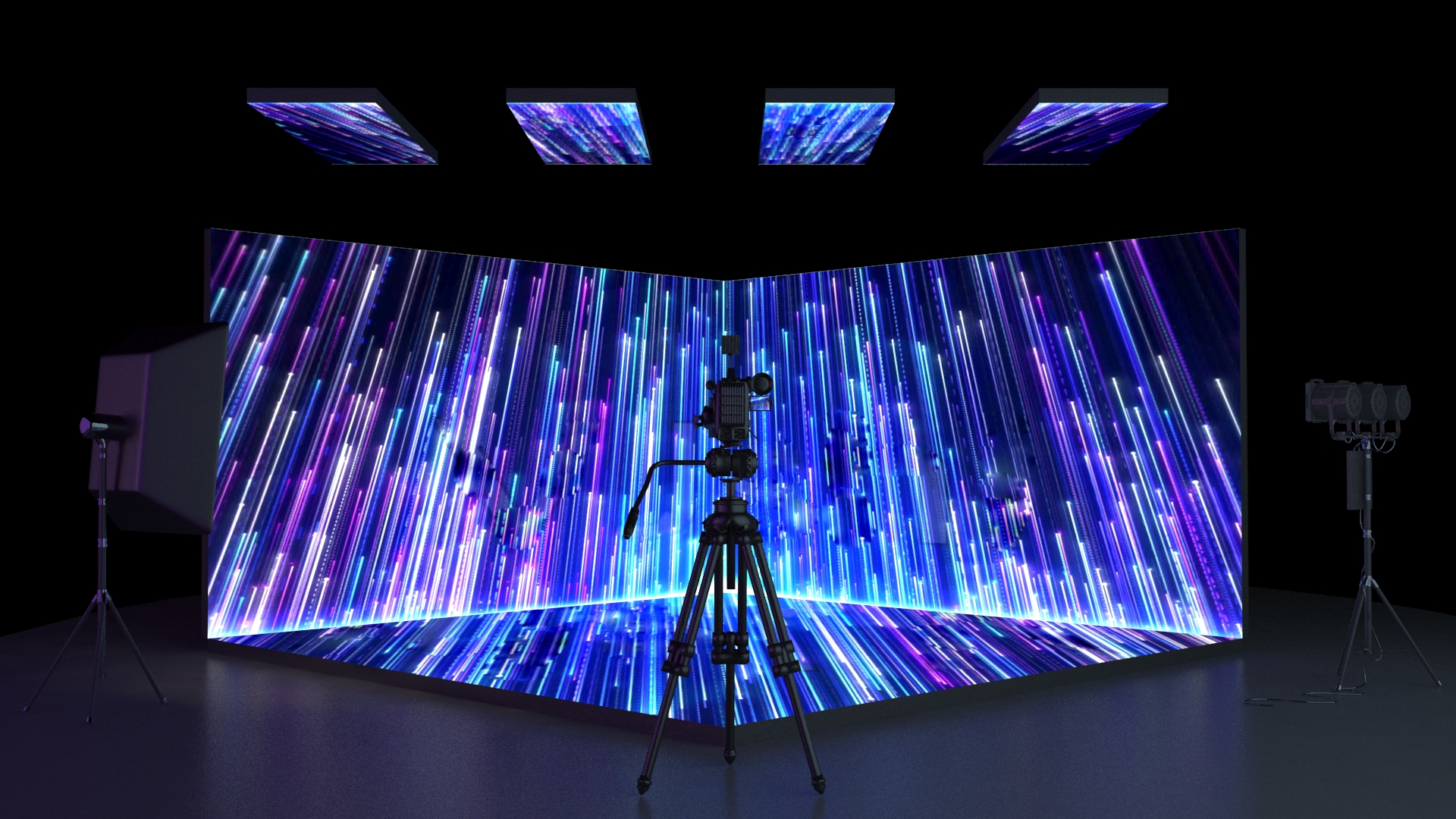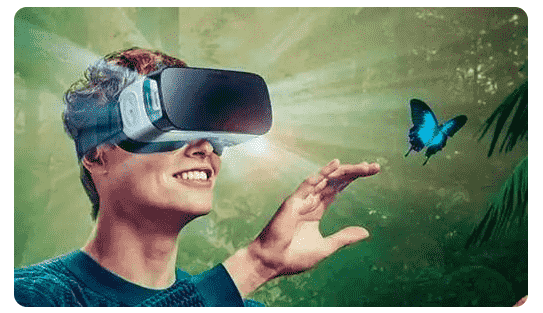Recently, Kim Min-woo, general manager of Samsung Display, said that since AR devices need to match the brightness of the light around the user and project virtual images into the real world, a display with higher brightness is required, so Micro LED technology is more suitable for AR device applications than OLED. This news caused heated discussions in the LED and AR industries. In fact, not only Samsung, but also Apple, Meta, Google and other terminal manufacturers are also optimistic about the prospect of Micro LED micro-display applications in the field of AR, and have reached cooperation or direct acquisitions with Micro LED manufacturers to conduct related research on smart wearable devices.
The reason is that compared with the more mature Micro OLED, Micro LED is still in the early stage of development, but its high brightness and high contrast are difficult for other display technologies to match. Wearable devices will be the most advantageous application fields of Micro LED in the future. Among them, in the field of smart wearable devices, AR glasses are one of the products that Micro LED can be applied quickly in the future.

As the leading display company, Samsung chose to be the "platform" of Micro LED micro-display technology this time, and launched related technology research and development, which will undoubtedly accelerate the application and development of this technology in AR glasses. Counting from the release of AR glasses "Google Project Glass" by Google in 2012, the development of AR glasses has gone through ten years, but the development of AR glasses has been in a tepid state, and the market demand has not increased significantly. Under the influence of the rise of the Metaverse concept in 2021, AR glasses will usher in a development boom. Domestic and foreign companies continue to bring new AR glasses, and the market is bustling.
Although new products are emerging one after another, the popularity of AR glasses continues to rise, gradually moving from the B-end to the C-end, but it is difficult to conceal that the market demand for AR glasses has not yet seen a significant increase. In the case of a poor overall economic environment and increased product pricing, AR/VR device shipments will reach 9.61 million units in 2022, with VR devices occupying a major share. Among them, the B-end market is still the main source of demand for AR glasses, and the mainstream products HoloLens and Magic Leap are all oriented to the B-end market. Although the C-end market has great potential for development, and the popularization of 5G and other telecommunications infrastructure, the advancement of chips, optics and other technologies, and the decline in hardware costs have driven consumer-grade AR glasses to the market one after another, but the rapid growth of the consumer-grade AR glasses market still faces challenges. Many puzzles.
The field of AR glasses has never been able to produce satisfactory consumer-grade products. The fundamental reason is that the best application scenarios have not been discovered, and the outdoor scene is the choice it made. Therefore, Li Weike Technology's first AR product is equipped with a Micro LED Micro display to meet the needs of outdoor scenes. Flexible led display. C-end products are still at the primary level. Most smart glasses are not real "AR glasses". They only realize the basic functions of audio interaction and smart photography, but lack visual interaction. The usage scenarios are relatively narrow, and the user's sense of smart experience is weak.
The above-mentioned problems faced by AR glasses can be solved one by one, and more applications and demands can be realized, and in the further future, it is expected to replace smartphones and tablet computers as mainstream electronic products on the consumer side. Optical display technology is a key component of AR glasses. An optical solution suitable for the future application requirements of AR can greatly alleviate and eliminate many problems faced by AR glasses, and lead AR glasses to the consumer market faster. Micro LED technology is expected to be the perfect solution for this.
In fact, the technical characteristics of Micro LED can meet the stringent requirements of AR glasses. With features such as high brightness, high resolution, high contrast, and fast response, clearer display requirements, higher interactivity, and wider application scenarios become possible. The features of thinness, lightness and miniaturization can reduce the weight of AR glasses, and add more fashion to product design to meet the needs of consumers. Low power consumption and high luminous efficiency can reduce power consumption and improve the battery life of AR glasses.

It can be seen that through the application of Micro LED display technology, the performance of AR glasses has been improved, which can meet the needs of longer use, cover all kinds of ambient light, and expand the application scenarios of AR glasses. As an optical display solution for AR glasses, Micro LED has obvious advantages, and provides a more comprehensive solution to the problem of AR glasses development. Therefore, major terminal manufacturers have accelerated the layout of Micro LED, hoping to take the lead in occupying the AR glasses market. . The Micro LED industry chain also sees opportunities and accelerates the resolution of Micro LED technical problems, so that the advantages of Micro LED do not fall on paper.
Although the AR glasses market is currently dominated by Micro OLED technology, in the long run, Micro LED is expected to gradually expand its share in the AR glasses market due to its superior performance characteristics. Therefore, not only major terminal manufacturers have expectations for Micro LED technology, but also companies in the LED industry chain continue to accelerate research on Micro LED display technology for AR. Since the beginning of this year, many manufacturers have announced their latest achievements in this field.
It can be seen that industry chain manufacturers are continuously optimizing the resolution, contrast, brightness, cost, light efficiency, heat dissipation, lifespan, full-color display effect and other performances of Micro LED display technology for AR, and comprehensively improve the maturity of Micro LED for AR. Spend. In addition, cooperation between enterprises and investment in the capital market have also continued this year. Through multiple perspectives, the process of large-scale application of Micro LED technology in AR devices will be accelerated and shortened.

Looking forward to the future, with the continuous optimization of technology, AR glasses using Micro LED technology will continue to increase, and Micro LED will continue to help optimize the performance of AR glasses through its own characteristics. AR glasses, as an application platform, provide more opportunities for the development of Micro LED technology. LED video wall. The complement of the two is expected to create a consumer electronics industry that surpasses the scale of computers and mobile phones in the future, leading the world into the Metaverse era.
Post time: May-15-2023
